SOCIAL MEDIA AG ENGINE.
LIVE VIDEO SERIES WITH HEIDI WRIGHT
How is Messenger Bot marketing being used to pave new opportunities for lead acquisition? Can Messenger Bot marketing help my ag business?
A chatbot is a piece of automated messaging software that uses AI to converse with people.


Heidi Wright, Director of Wright Social, chats with Jenna Curry, Lead Digital Strategist of Remedy Digital in North Carolina about the value of Messenger Bot marketing in 2020.
Heidi: Alright, we have Jenna Curry here from Remedy Digital. Jenna, where are you joining us from?
Jenna: I am on the coast of North Carolina at the moment.
Heidi: Wow. And it’s evening there right?
Jenna: 9 o’ clock at night
Heidi: 9 o’ clock at night. Gosh, and it’s the morning on Wednesday. Well, thanks so much for taking the time out of the evening to join us here this morning. We’re all really excited because we’re here to talk about messenger bot marketing. But first of all, I just want to have you introduce yourself a little bit about what you do and also how you first got started in the bot world.
Jenna: Sure. So I’m the only digital strategist for Digital Remedy, we work a lot in the education space and for service based businesses doing lead generation and everything from acquiring a lead through to nurturing them to setting an appointment to making the sale.
We’ve also worked with some in e-commerce and some and mobile app installs. But right now we have focused more on the lead acquisition side of marketing. And it’s a lot of fun, especially right now when a lot of businesses are realizing that they hadn’t been taking advantage of digital, that it’s time to pivot and really invest some dollars. And that’s something that they can incorporate once we’re more or less in lockdown. Because we’re all in the same boat, we’re on the same level.
Heidi: That’s right. And particularly over in the US. I can imagine how difficult it is. I mean, before this call, we were chatting about when you go to a restaurant, you have to wear a mask and you take it off to eat and then you put it back on.
Jenna: Obviously, when you sit down, you can take it off so that no one would go out if we had to to do that. Huh! Yeah. I have so many cool masks now, like my mask game is like on point.
Heidi: All right, let’s get into this. I think most of the people in this group would be familiar with the Facebook Messenger’s auto response feature from a consumer point of view; they message a page and automatically will get asked, how can I help you? What is your question? An instant response is given. But maybe not so familiar with how a Facebook Messenger bot can help businesses to grow.
So, first of all, how would you describe a messeger bot to someone who is completely brand new?
Jenna: Sure. So it is what you describe that is a bot that is already on our pages that a lot of us on Facebook at some point probably prompted you like, hey, what do you want these responses to be? And so that is a bot because it is an automated response. The type of message you’re about we’re going to talk about today is a bot like that, but on steroids, basically, because it can do pretty much an unlimited amount of things for your business, it can really automate certain parts of your business if that’s what you’re trying to do, or at least the parts that make sense. And it’s basically a way to engage your audience, have conversations with your audience without having to manually have a person there one hundred percent of the time.
So there’s a lot of different use cases where it makes sense and sometimes where it doesn’t make sense to use them. But you can do anything from having a conversation, doing a client’s onboarding, educating, answering frequently asked questions, doing an e-commerce transaction, following up with the e-commerce transaction. If somebody purchased something, you can do their shipping notifications and they’re asked for feedback. You can have people schedule appointments in there. There’s tons of use cases where it makes sense and it can actually replace an employee or multiple employees depending on the type of business that you have.
Heidi: And let’s talk about that element, because there’s so much automation today that’s on offer through technology. And I think it can sometimes alienate the customer and even drive customers away. How is a messenger bot different? And from your perspective, more personable than other forms of automated marketing, such as email?
Jenna: Well, there’s definitely impersonal bots, so there’s definitely you can have a bad experience also, so in the same way you can have bad email experience, you can have bad phone experience, like when you’re talking to somebody of the same thing can happen in a bot if it’s just not if it’s invasive, if it’s just things are moving too quick. Like there’s a there’s a rhythm that you want to create and how you respond and what you’re asking and what you’re offering through messenger, but how it’s different for email.
So, for example, if you bring in a client or a customer and you want them to do something, you’re trying to warm them up, just like dating you warm people up before you ask them to marry you, you warm your customers up before you ask them to do the next thing. And so we’re used to getting a bunch of emails, but you’re not going to get 10 emails in a day telling you 10 different things. But with a messenger by through conversations and navigating what the user actually wants, you can have a 10 steps. You can get them 10 steps further down your sales process through a messenger versus waiting for them to open your next ten emails. So what it can do is it can segment what your customer or client desires earlier and the sales process. And then you can have different message responses of four different segmentations of your audience. So that happens faster. And then, yes, you can get them further down the funnel faster because you know what they want sooner versus waiting for them to open up their email so you can just have a whole conversation.
Heidi: Awesome. And I think too the language that we use in understanding your customer and how they communicate, it’s nothing worse than sort of being faced with the conversation that you’re not expecting, particularly from a brand that you already are familiar with. It’s that language and it’s not on brand or on tone. It can really sort of surprise you.
Furthermore, when we hear that ding on messenger, it’s sort of what you expect it to be, a personal message. So respecting that and ensuring that if you are using the bot, that value needs to be the first priority in terms of communication with the customer.
Jenna: Yes, one hundred percent, and I think that as marketers and business owners, we need to be super, super respectful of any where we’re sending messages to our audience and making sure it’s valuable, making sure it’s entertaining, making sure that it’s useful. And it’s not just blasting people.
You know, you want to engage, you want to communicate, you want to nurture them through your sales process. You want to solve their problems, not blast them. Which any time like I have a client or prospective clients, like, well, we just want to blast this out there. And it’s like, no, that’s not what we want to do. Like, how are we going to solve their problem and how do we best articulate how we’re going to solve that problem?
But to your point about language, you can be a little more conversational. Whenever I build bots at the beginning, I always tell them, like we’re an automated bot and I give it a name and it’s usually, it’s just something friendly. So that one, we’re not trying to trick the customer into thinking they’re actually speaking to somebody. But, you know, you can be silly. You can be cheeky, if you will. But depending on who your audience is. For example, if you’re talking to your medical, if you’re running a bot that’s only talking to doctors or people in the medical community, you might use different language than if you’re running into a bunch of twenty one year olds about like fashion, the things that you would say to them and the language.
Heidi: Good points. I like to think of the bot as being where conversational marketing makes automation. So to have both together, it’s like, yes, it’s got to be conversational. And then you’ve got this automation.
Great, everything we’ve spoken about here makes complete sense. Knowing your customer, how to add value and applying that to a bot in order to meet your marketing or sales objective.
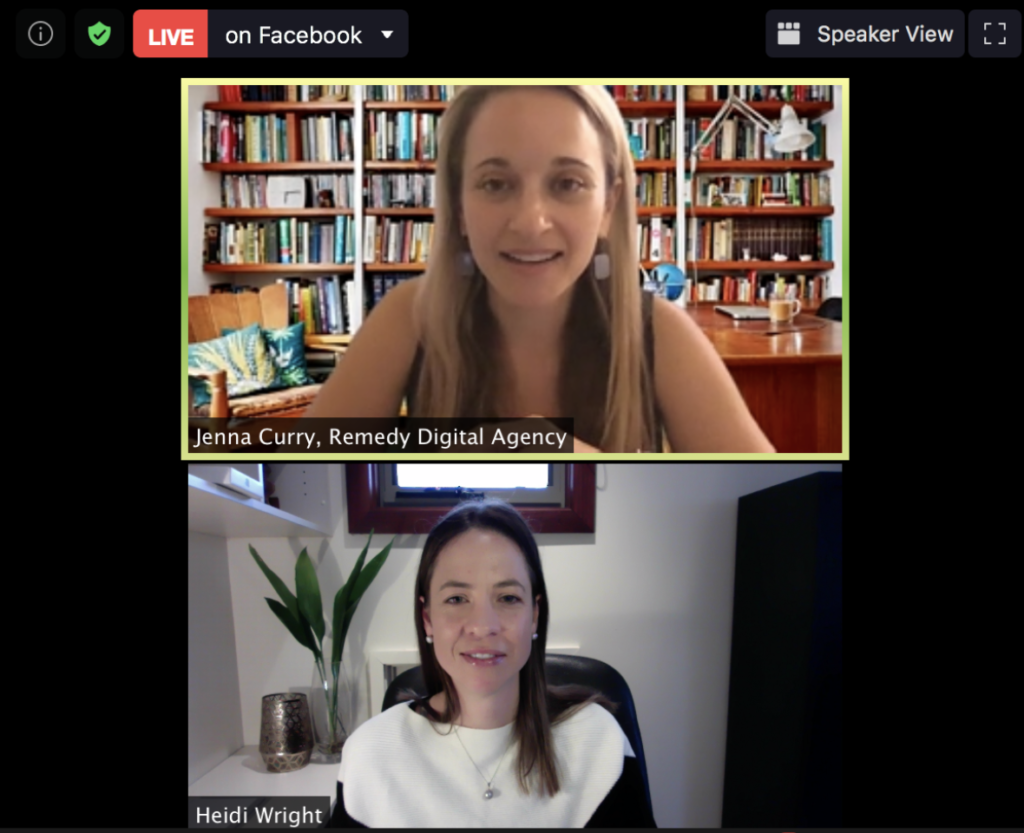
Watch the replay at https://bit.ly/FreeGroupForAg
Let’s get into the mechanics of a bot. I’m sure there’s some people who are wondering, how do bots actually work and how are they powered beyond the auto-response on Facebook? So you can you share us a little bit about how a bot actually works, then we’ll get into how it can generate leads for our business?
Jenna: Sure. So it’s, it’s all software, it’s all built by developers and there it’s actually really complicated to do, but there’s been companies that have created very user friendly customer facing, software, such as ManyChat or Chatfuel, uh, I use ManyChat for all the ones that I build and everything. It’s basically just a series of if this, then that. And so if the user does this and then that, if this is clicked, then if that is clicked, this does / doesn’t happen.
Heidi: Oh, you explained that very well actually to some of the newbies. And in your experience, what types of businesses are best suited for bot marketing? Because there’s service based and product based. With e-commerce, you can draw some really good sales in a very short amount of time, whereas for service based businesses, it’s different. You’ve also got that customer service element. I mean, I know there’s so many different applications, maybe a better question for you is, where have you seen the most success when it comes to messenger bot marketing to drive a sale result?
Jenna: A couple of examples and use cases. So for example, e-commerce, I’ve seen it work really well for products that aren’t super obvious. So perhaps it’s a new skincare product or it’s something we did a really successful campaign in our, the e-commerce purchases that happened through a messenger bot were 10 times less expensive than once just sending right to the page. It was for actually a product in Australia around camping and we sent, we were able to educate them through the bot. So to say, did you know this?
Are you looking for these types of sites? And so by the end of it, they’re already sold and what’s great is that a product also had an app attached to it. And so, you know, whether or not they bought one thing could suggest the other. So would you also be interested in this? And so when you have multiple products, especially if they require more education, it’s a great place to do that versus sending them three layers of retargeting ads and three emails.
You can do all the education within a messenger bot, by asking them what they do or don’t like. And so, with a bot you really want to be engaging and not just send like a paragraph paragraph paragraph, but it’s literally a conversation with them. So you want to make sure after everything you say, there’s something for them to do. And that’s kind of how the conversation works. For service-based businesses, you can have people, claim an offer through, through messenger. And the reason to do that would be if you wanted to follow up with them, to do whatever the next thing is. So maybe it’s scheduling an appointment, maybe it’s once they’ve scheduled an appointment, reminding them of the appointment. I also do a lot of contesting. So lots of contests through apps and contests are great because especially if there’s multiple steps to the contest, then once they do one thing, you can say, Oh, now if you go back and tag more people or share this post or something like that, you get additional entries.
One thing that we haven’t even talked about is, is there’s a way to automate capturing contact info. So, Facebook already knows people’s first name, last name, email, and phone number. At least the one they signed up with.
So through a messenger bot, you can have people confirm those contact details and it makes it really easy on the customer because they’re just saying, yes, that’s my contact info. And then they can change it if not, but there’s a way to automate that. So it goes directly into your CRM right into your email list.
So now you not only have that in ManyChat but you can send additional messages via email. You know, like sending SMS messages to those people as long as they opt in. So that would be part of the flow too. It’s like, do we have permission to send you this message?
Heidi: That’s great. I think, you know, the best success we’ve had with bots through ManyChat is by far giving away something of value for list building purposes. One example that comes to mind is where we spent around $300 ad spend behind a message bot campaign using the Growth Comment Tool. I think it went over around three weeks, we generated well over 1500 email addresses. The prize value was a couple hundred bucks and that was 12 months ago. So a lot of things have happened since then in the messenger bot marketing world. But even if you look at that, the return on investment for a medium sized business in ag was huge. And if you were trying to run that as an email marketing campaign, I just don’t think that particular campaign would have performed so well.
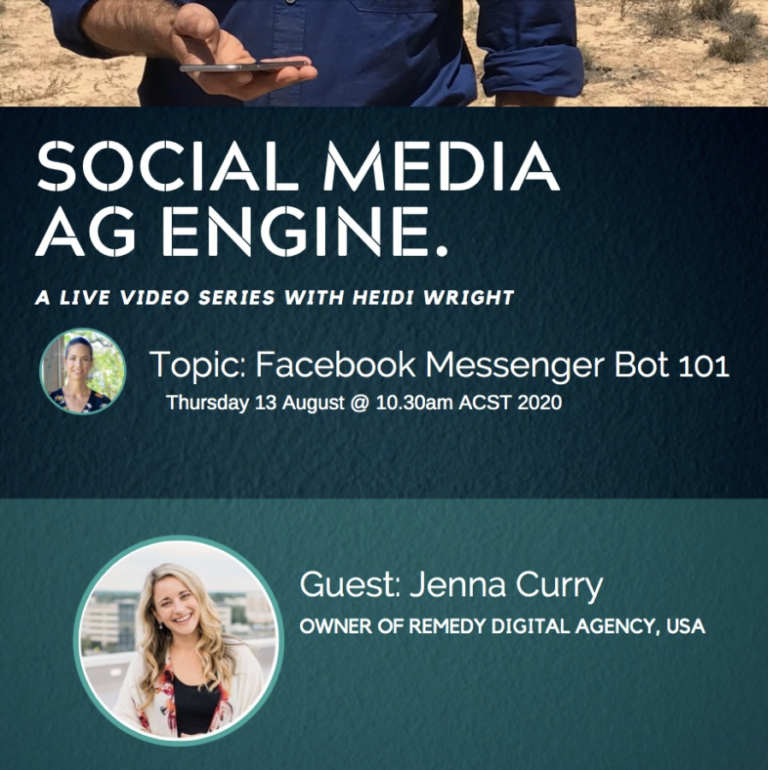
Cool. Alright. So let’s now talk about tactics. What tactics might we use when it comes to engaging our audience in a fun way?
We’ve talked about sort of giveaways, quizzes etc what sort of questions have you found have worked really well for getting that initial bite? You know, getting that initial opt in, is it to do with the language, the visual, what are some tips around attracting that first person into your bot that you can share with us? And just for those who are unsure, let’s give an example with the comment growth tool Jenna. The most used tool in ManyChat. So the way that works is we publish a post to the actual page and then you can promote it through Facebook ads. When someone comments on that post, just like any post, that person is instantly sent a message via bot. So that’s how you get someone from a Facebook user into the bot, which is now a conversation by messenger. As we know that way messenger bots work is that the user has to engage first. If they don’t engage with you first, then you can’t engage them with the bot.
So over to you, Jenna, for any tactics regarding getting actually people into that initial bot conversation.
Jenna: Okay. It is, Hey, before we can deliver X, please confirm you’re human by typing Y
Heidi: Yes.
Jenna: Or are you, yeah, that basically any variation of that and making them have to just type one letter or one thing, because if you say something that they don’t want to answer, then you might lose that, ability to have that conversation.
So pretty much everyone, if they’re wanting to know what happens, they’re going to be like, yes, I’m human. I’m not a robot. Or, you know, if you’re not a robot type, whatever, so that’s another way to do it. But that I’ve found testing, just doing that versus any other strategy, gets more people to go to the next step.
So then it’s, Hey, first name, remind them why they’re there and what they’re going to get out of having that conversation with you. So you don’t really have to be like clever at first. You just want them to stick around. Well, to be able to have the conversation started and you kind of trick them into doing that and then, reminding them why they’re there. And if you have something valuable enough to give them, to be worth their times, and they’re going to stick around.
Heidi: Jenna, you have just given some gold right there, because that will increase the response rate two fold – guys replay that, write it down and use it in your next messenger bot campaign.
Let’s talk about the 24-hour rule Jenna because that was something that’s been introduced relatively recently, I guess recently in the Facebook timeline all of things. Tell us about this update and what we need to know as marketers?
Jenna: Sure so a lot of us in the bot world, we’re really sad when this rule came out and the reason it came out is because so many marketers were abusing the inbox that sacred place if you get to show up in the inbox you need to treat it with respect just like what you said like that dingoes off don’t send garbage to people’s phone don’t spam people. So anyway they Incorporated the 24-hour rule to basically stop people from sending unsolicited messages so that means somebody to be able to send somebody a promotional message meaning you’re trying to get them to do something or buy something then I guess by something or yeah that would be the best way to describe it, then they have had they would have had to engage with your bot within 24 hours. So this a really stops us from being able to use Messenger as like a broadcasting mechanism for promotions. Now it can still be used as a broadcasting tool for events, for reminders, for announcements, such announcements that are non-promotional that somebody subscribes to. So for Heidi Who does these events every I don’t know how often you do every month? Are you did you’re doing these every week or whenever?
Heidi goes live so for example, I could send an email to all of you or make a post in the group and say if you would like to be notified every time we go live in the group via messenger you can subscribe here so if you subscribed to that, you are telling Facebook that you want to see these messages outside of 24 hours.
So if you ever subscribe to a group or that does announcements periodically that our non-promotional then you’ll find that you’re getting those in your inbox like regularly, because you’ve said that you want those.
Also if you were to buy something and you’re like yes keep me notified about the purchase like those can be sent out of 24 hours. You can also, if you want to some promotional messages outside of the 24-hour rule, you can pay Facebook and for a budget they will allow you to do that also you can work on I mean if you have somebody really managing it regularly and you’re putting out new content every day just every 23 hours make sure you’re sending out something to your list so that somebody can re-engage with it and there’s a way to set timers within it to do that and so at those times you would always want to say something that you know they’re going to click on or respond to, you know, like even if it’s like a joke and then they want the answer and then like what and then you give them the answer but as…yeah as long as they engage within 24 hours then they can still be like still hot on your list to be able to re-market to without a budget and that’s why we tend to use it for things that have less than a 24-hour cycle that we’re trying to do them for, unless it’s we want them in a part of a community where we’re sending out announcements regularly so notifying for events for example.
Heidi: That was a really good summary and would you also suggest that for within those 24 hours if you’re thinking about a list building campaign or any other campaign that requires converting a customer over a longer period of time, that you work at ways you know you can access their up to date contact details?
Jenna: Yes absolutely and even if so what Facebook will or what the messenger bot will do as far as capturing contact information is it will pull whatever one was already there so your old college one but if it’s not then you just type in with a new one is it’ll say like tap you know it’s about would say like tap this at this is correct if not type it in so either way you have to ask for it but yes you anything that you know you need you want to do like right off the bat, especially if they want something really juicy from you like if you have something like a really valuable lead magnet or offer and for them to get it you can the better it is the more you can ask for basically – it’s like okay we want you to do it ABCDEFG and then we’ll give it to you. But if you’re if it’s something small or if you’re just like hey do you want to get on our email list to stay up-to-date about news and events like they may or not be excited to do that.
But yes going and getting that contact information because another way to get people to re-engage with your Bot is to email them. So there’s links that they’re called a reference URL or ref URL that if somebody clicks that link it will open a conversation and messenger so by having them also give you their email if there’s a campaign that you want to send them through Messenger for that’s going to be more conversational.
Heidi: Yeah cool and just for those people that may not be aware of the back end of a bot, we’ve only got a couple of minutes left, so in terms of where that email goes, let’s describe it. From messenger, to ManyChat to the CRM, using a tool like Zapier. The details are automatically zapped into your CRM which could be Active Campaign or HubSpot or any of those email marketing tools.
Jenna: Yes!
Heidi: This has so far been awesome Jenna. I’m just going to check back in the group and see if we have any questions. We have six people joining us live which is awesome and any questions guys before we sign off now is your chance. If there’s other questions feel free to drop me in the comments and I’ll see if I can track Jenna down again although she’s flat-out busy there in North Carolina!
Jenna, thank you so much for your time, it’s been such a joy to chat to you. You always bring so much value and all my conversations with you are always just authentic, genuine and to the point so really appreciate it.
Jenna: Thanks so much Heidi good luck with everyone and if you check if you end up building a bot send it to me I’d love to go through it.
Heidi: Yes! Jenna, where can people learn more about you too?
Jenna: You can find me at remedydigitalagency.com or follow me on Instagram @jennacurry_ those are probably the two best ways to reach me.
Heidi: Awesome all right we’ll take care and I’ll talk to you soon. Okay bye!
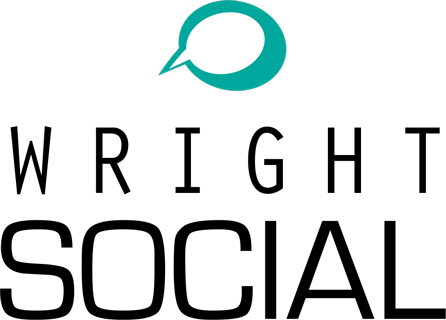

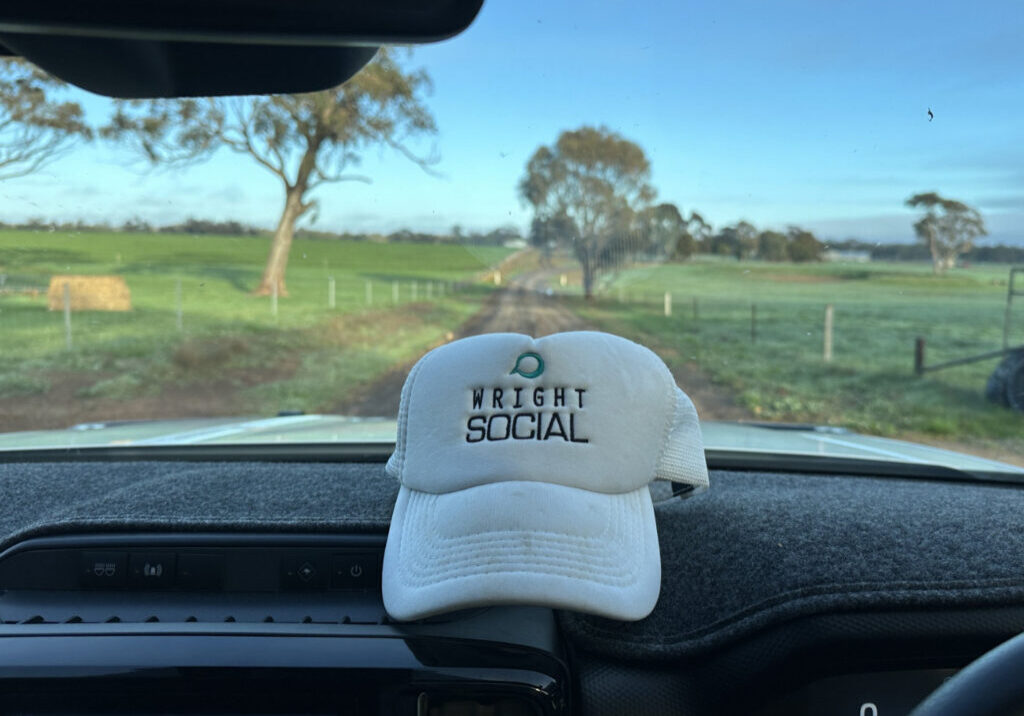

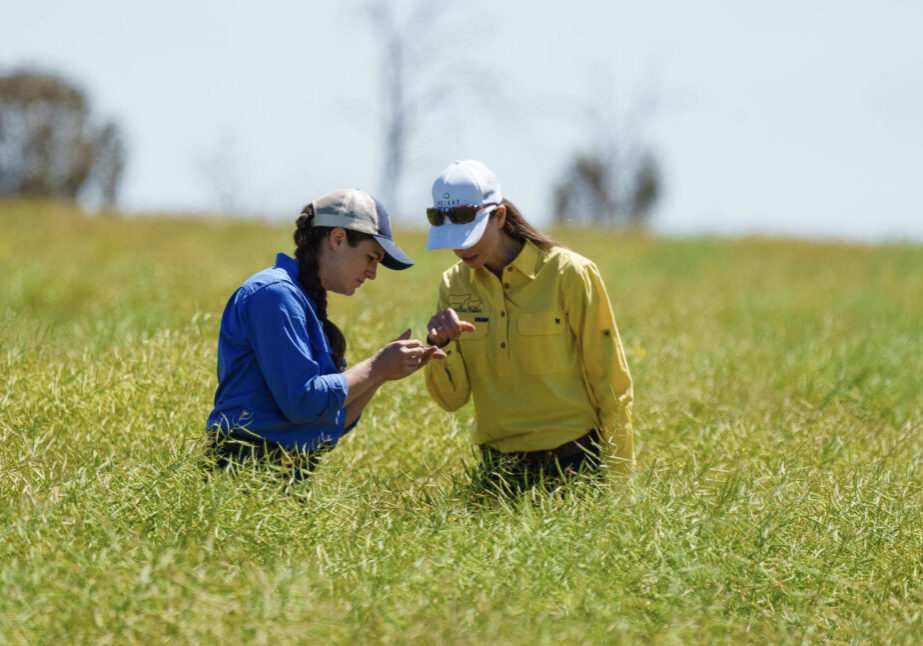
Leave a Reply